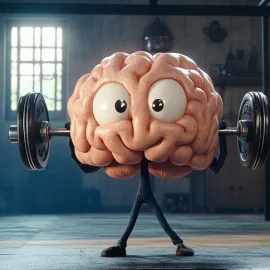

This article is an excerpt from the Shortform book guide to "Upstream" by Dan Heath. Shortform has the world's best summaries and analyses of books you should be reading.
Like this article? Sign up for a free trial here.
Are you more likely to reach for an ambiguous solution or a clear one? How does a problem’s urgency affect your approach to solving it?
Dan Heath argues that people should always strive for upstream solutions because they tend to have longer-lasting benefits and provide opportunities to reduce human suffering. But, we typically gravitate toward reactive problem-solving instead.
Keep reading to learn three reasons why we’re biased in this direction.
Our Bias Toward Reactive Problem-Solving
In his book Upstream, Dan Heath advocates for upstream solutions. That’s because they’re not about ending a single cause-and-effect cycle. Instead, they’re about the ability to endlessly zoom out to see the bigger picture and identify key points where something might be going wrong. That way, we can prevent problems from occurring in the first place.
But, Heath says that people are generally biased toward reactive problem-solving instead and shares three reasons why he thinks this is so. He explains that reactive solutions are often more tangible than upstream actions. Urgent scarcities prevent people from thinking about long-term solutions. And, many pervasive problems become normalized over time. We’ll discuss a few examples that illustrate these principles.
Reason #1: Reactive Solutions Are More Tangible
Heath writes that reactive solutions tend to be more tangible because they imply that there’s already a specific and immediate problem to be addressed. (Shortform note: Ethics research supports this idea that people are generally biased toward more tangible and immediate problems rather than abstract and distant ones. Researchers suggest combating this tendency by using “moral imagination” to think through the ripple effects of your actions on others.)
For example, if your house is a mess because you and your housemate are both avoiding the task of cleaning, there are likely immediate problems, like not being able to use the sink full of dirty dishes. A reactive solution might be to flip a coin to decide who has to clean. By this point, resentment is simmering between you and your housemate, and it’s likely that only one person will be happy with the outcome. Nevertheless, something has to be done soon to restore a tidy home environment.
In contrast, an upstream solution might be more ambiguous—like figuring out how to communicate better and learning each other’s needs so that the problem doesn’t arise in the first place. Perhaps scheduling weekly chores in advance seems fairer to both people. Or talking through the issue might reveal that a mismatch in expectations caused the tension. However, Heath suggests that these upstream actions require patience and accepting uncertainty about the root cause.
(Shortform note: In The Anatomy of Peace, The Arbinger Institute suggests that having this kind of patience and acceptance around resolving conflict requires a cooperative mindset: seeing others as people with needs, challenges, hopes, and fears that are equally important as your own.)
In addition, Heath asserts that it can be hard to measure what didn’t happen as a result of upstream thinking, like knowing how many awkward social interactions between housemates were avoided by taking preventive action. Heath suggests that intangible benefits like this make it more difficult to recognize the advantages of upstream action.
(Shortform note: Although it’s difficult to quantitatively measure the events that upstream action prevented, you can still track trends and observe how a situation has changed over time. For example, if you take upstream action to prevent conflict with another person, you might notice that you used to fight with them on a weekly basis and now you rarely fight. This kind of observation, while not definitively linked to the upstream action (because there might also be other factors), can still give helpful insight into the upstream action’s potential impact.)
Reason #2: Urgent Scarcities Hinder Long-Term Thinking
Heath claims that the second reason why people are biased toward reactive solutions is that urgent problems blind us to long-term solutions. He cites research showing that in conditions of scarcity, like not having enough time to get everything done, people involuntarily narrow their focus around the scarce resource. Heath writes that in these situations, people are psychologically unable to make sensible decisions to manage their time better in the future because all they can think about is how to juggle all of their urgent tasks from moment to moment.
(Shortform note: In Scarcity, Sendhil Mullainathan and Eldar Shafir contend that in addition to preventing people from making good long-term decisions about things like time and money, scarcity can also exacerbate problems by causing us to neglect other parts of our life that we care about. For example, if you’re worried about the limited time you have to finish all of your work, the scarcity mindset might prevent you from being fully present and engaged with your loved ones. Therefore, the scarcity hinders upstream solutions to the original problem and potentially causes new problems in other areas.)
Reason #3: Communities Normalize Widespread Problems
Lastly, Heath explains that people favor reactive solutions because when a problem becomes pervasive, people naturally adapt to the situation and normalize it. For example, in the previous scenario, if your house seems like it’s always a mess no matter how often you tell your housemate to clean, you might eventually accept the messiness as an inevitable state of things. You might use reactive strategies like jumping over laundry piles instead of trying to prevent the mess.
Heath writes that people forget that they have the agency to avoid many problems. Furthermore, even if a problem impacts people broadly, there’s often no single actor with clear and sole ownership over resolving widespread societal crises such as health epidemics.
(Shortform note: In Emotional Intelligence 2.0, Travis Bradberry and Jean Greaves recommend a concrete strategy to combat this tendency to avoid or normalize problems. They suggest a self-management technique of carving out 15 minutes per day, away from your regular work, that you can dedicate to problem-solving. On the other hand, in The Success Principles, Jack Canfield points out that it’s important to only commit to things you can deliver on, suggesting that you should be selective about the problems you take on. This aspect of being realistic about your capacity might be particularly important when working with other people who will feel let down if you don’t follow through.)

———End of Preview———
Like what you just read? Read the rest of the world's best book summary and analysis of Dan Heath's "Upstream" at Shortform.
Here's what you'll find in our full Upstream summary:
- Why you need to get to the root of a problem rather than applying band-aids
- Guidelines for implementing upstream solutions to solve problems
- How to solve problems before they happen






